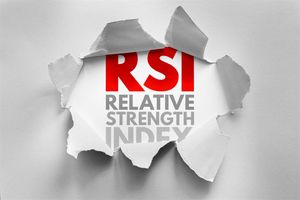
The landscape of Artificial Intelligence (AI) governance in late 2025 is a study in contrasts, with the U.S. federal government actively seeking to streamline regulations to foster innovation, while individual states like Pennsylvania are moving swiftly to establish concrete guardrails for AI's use in critical sectors. These parallel, yet distinct, approaches highlight the urgent and evolving global debate surrounding how best to manage the rapid advancement and deployment of AI technologies. As the Office of Science and Technology Policy (OSTP) solicits public input on removing perceived regulatory burdens, Pennsylvania lawmakers are pushing forward with bipartisan legislation aimed at ensuring transparency, human oversight, and bias mitigation for AI in healthcare.
This bifurcated regulatory environment sets the stage for a complex period for AI developers, deployers, and end-users. With the federal government prioritizing American leadership through deregulation and states responding to immediate societal concerns, the coming months will be crucial in shaping the future of AI's integration into daily life, particularly in sensitive areas like medical care. The outcomes of these discussions and legislative efforts will undoubtedly influence innovation trajectories, market dynamics, and public trust in AI systems across the nation.
Federal Deregulation vs. State-Specific Safeguards: A Deep Dive into Current AI Governance Efforts
The current federal stance on AI regulation, spearheaded by the Biden-Harris administration's Office of Science and Technology Policy (OSTP), marks a significant pivot from previous frameworks. Following President Trump’s Executive Order 14179 on January 23, 2025, which superseded earlier directives and emphasized "removing barriers to American leadership in Artificial Intelligence," OSTP has been actively working to reduce what it terms "burdensome government requirements." This culminated in the release of "America's AI Action Plan" on July 10, 2025. Most recently, on September 26, 2025, OSTP launched a Request for Information (RFI), inviting stakeholders to identify existing federal statutes, regulations, or agency policies that impede the development, deployment, and adoption of AI technologies. This RFI, with comments due by October 27, 2025, specifically targets outdated assumptions, structural incompatibilities, lack of clarity, direct restrictions on AI use, and organizational barriers within current regulations. The intent is clear: to streamline the regulatory environment to accelerate U.S. AI dominance.
In stark contrast to the federal government's deregulatory focus, Pennsylvania lawmakers are taking a proactive, sector-specific approach. On October 6, 2025, a bipartisan group introduced House Bill 1925 (H.B. 1925), a landmark piece of legislation designed to regulate AI's application by insurers, hospitals, and clinicians within the state’s healthcare system. The bill's core provisions mandate transparency regarding AI usage, require human decision-makers for ultimate determinations in patient care to prevent over-reliance on automated systems, and demand attestation to relevant state departments that any bias and discrimination have been minimized, supported by documented evidence. This initiative directly addresses growing concerns about potential biases in healthcare algorithms and unjust denials by insurance companies, aiming to establish concrete legal "guardrails" for AI in a highly sensitive domain.
These approaches diverge significantly from previous regulatory paradigms. The OSTP's current RFI stands apart from the previous administration's "Blueprint for an AI Bill of Rights" (October 2022), which served as a non-binding ethical framework. The current focus is less on establishing new ethical guidelines and more on dismantling existing perceived obstacles to innovation. Similarly, Pennsylvania's H.B. 1925 represents a direct legislative intervention at the state level, a trend gaining momentum after the U.S. Senate opted against a federal ban on state-level AI regulations in July 2025. Initial reactions to the federal RFI are still forming as the deadline approaches, but industry groups generally welcome efforts to reduce regulatory friction. For H.B. 1925, the bipartisan support indicates a broad legislative consensus within Pennsylvania on the need for specific oversight in healthcare AI, reflecting public and professional anxieties about algorithmic decision-making in critical life-affecting contexts.
Navigating the New Regulatory Currents: Implications for AI Companies and Tech Giants
The evolving regulatory landscape presents a mixed bag of opportunities and challenges for AI companies, from nascent startups to established tech giants. The federal government's push, epitomized by the OSTP's RFI and the broader "America's AI Action Plan," is largely seen as a boon for companies like Google (NASDAQ: GOOGL), Microsoft (NASDAQ: MSFT), and Amazon (NASDAQ: AMZN) that are heavily invested in AI research and development. By seeking to remove "burdensome government requirements," the administration aims to accelerate innovation, potentially reducing compliance costs and fostering a more permissive environment for rapid deployment of new AI models and applications. This could give U.S. tech companies a competitive edge globally, allowing them to iterate faster and bring products to market more quickly without being bogged down by extensive federal oversight, thereby strengthening American leadership in AI.
However, this deregulatory stance at the federal level contrasts sharply with the increasing scrutiny and specific requirements emerging from states like Pennsylvania. For AI developers and deployers in the healthcare sector, particularly those operating within Pennsylvania, H.B. 1925 introduces significant new compliance obligations. Companies like IBM (NYSE: IBM) Watson Health (though divested, its legacy and similar ventures by others are relevant), various health tech startups specializing in AI diagnostics, and even large insurance providers utilizing AI for claims processing will need to invest in robust transparency mechanisms, ensure human oversight protocols are in place, and rigorously test their algorithms for bias and discrimination. This could lead to increased operational costs and necessitate a re-evaluation of current AI deployment strategies in healthcare.
The competitive implications are significant. Companies that proactively embed ethical AI principles and robust governance frameworks into their development lifecycle may find themselves better positioned to navigate a fragmented regulatory environment. While federal deregulation might benefit those prioritizing speed to market, state-level initiatives like Pennsylvania's could disrupt existing products or services that lack adequate transparency or human oversight. Startups, often lean and agile, might struggle with the compliance burden of diverse state regulations, while larger tech giants with more resources may be better equipped to adapt. Ultimately, the ability to demonstrate responsible and ethical AI use, particularly in sensitive sectors, will become a key differentiator and strategic advantage in a market increasingly shaped by public trust and regulatory demands.
Wider Significance: Shaping the Future of AI's Societal Integration
These divergent regulatory approaches—federal deregulation versus state-level sector-specific guardrails—underscore a critical juncture in AI's societal integration. The federal government's emphasis on fostering innovation by removing barriers fits into a broader global trend among some nations to prioritize economic competitiveness in AI. However, it also stands in contrast to more comprehensive, rights-based frameworks such as the European Union's AI Act, which aims for a horizontal regulation across all high-risk AI applications. This fragmented approach within the U.S. could lead to a patchwork of state-specific regulations, potentially complicating compliance for companies operating nationally, but also allowing states to respond more directly to local concerns and priorities.
The impact on innovation is a central concern. While deregulation at the federal level could indeed accelerate development, particularly in areas like foundational models, critics argue that a lack of clear, consistent federal standards could lead to a "race to the bottom" in terms of safety and ethics. Conversely, targeted state legislation like Pennsylvania's H.B. 1925, while potentially increasing compliance costs in specific sectors, aims to build public trust by addressing tangible concerns about bias and discrimination in healthcare. This could paradoxically foster more responsible innovation in the long run, as companies are compelled to develop safer and more transparent systems.
Potential concerns abound. Without a cohesive federal strategy, the U.S. risks both stifling innovation through inconsistent state demands and failing to adequately protect citizens from potential AI harms. The rapid pace of AI advancement means that regulatory frameworks often lag behind technological capabilities. Comparisons to previous technological milestones, such as the early days of the internet or biotechnology, reveal that periods of rapid growth often precede calls for greater oversight. The current regulatory discussions reflect a societal awakening to AI's profound implications, demanding a delicate balance between encouraging innovation and safeguarding fundamental rights and public welfare. The challenge lies in creating agile regulatory mechanisms that can adapt to AI's dynamic evolution.
The Road Ahead: Anticipating Future AI Regulatory Developments
The coming months and years promise a dynamic and potentially turbulent period for AI regulation. Following the October 27, 2025, deadline for comments on its RFI, the OSTP is expected to analyze the feedback and propose specific federal actions aimed at implementing the "America's AI Action Plan." This could involve identifying existing regulations for modification or repeal, issuing new guidelines for federal agencies, or even proposing new legislation, though the current administration's preference appears to be on reducing existing burdens rather than creating new ones. The focus will likely remain on fostering an environment conducive to private sector AI growth and U.S. competitiveness.
In Pennsylvania, H.B. 1925 will proceed through the legislative process, starting with the Communications & Technology Committee. Given its bipartisan support, the bill has a strong chance of advancing, though it may undergo amendments. If enacted, it will set a precedent for how states can directly regulate AI in specific high-stakes sectors, potentially inspiring similar initiatives in other states. Expected near-term developments include intense lobbying efforts from healthcare providers, insurers, and AI developers to shape the final language of the bill, particularly around the specifics of "human oversight" and "bias mitigation" attestations.
Long-term, experts predict a continued proliferation of state-level AI regulations in the absence of comprehensive federal action. This could lead to a complex compliance environment for national companies, necessitating sophisticated legal and technical strategies to navigate diverse requirements. Potential applications and use cases on the horizon, from personalized medicine to autonomous vehicles, will face scrutiny under these evolving frameworks. Challenges will include harmonizing state regulations where possible, ensuring that regulatory burdens do not disproportionately affect smaller innovators, and developing technical standards that can effectively measure and mitigate AI risks. What experts predict is a sustained tension between the desire for rapid technological advancement and the imperative for ethical and safe deployment, with a growing emphasis on accountability and transparency across all AI applications.
A Defining Moment for AI Governance: Balancing Innovation and Responsibility
The current regulatory discussions and proposals in the U.S. represent a defining moment in the history of Artificial Intelligence governance. The federal government's strategic shift towards deregulation, aimed at bolstering American AI leadership, stands in sharp contrast to the proactive, sector-specific legislative efforts at the state level, exemplified by Pennsylvania's H.B. 1925 targeting AI in healthcare. This duality underscores a fundamental challenge: how to simultaneously foster groundbreaking innovation and ensure the responsible, ethical, and safe deployment of AI technologies that increasingly impact every facet of society.
The significance of these developments cannot be overstated. The OSTP's RFI, closing this month, will directly inform federal policy, potentially reshaping the regulatory landscape for all AI developers. Meanwhile, Pennsylvania's initiative sets a critical precedent for state-level action, particularly in sensitive domains like healthcare, where the stakes for algorithmic bias and lack of human oversight are exceptionally high. This period marks a departure from purely aspirational ethical guidelines, moving towards concrete, legally binding requirements that will compel companies to embed principles of transparency, accountability, and fairness into their AI systems.
As we look ahead, stakeholders must closely watch the outcomes of the OSTP's review and the legislative progress of H.B. 1925. The interplay between federal efforts to remove barriers and state-led initiatives to establish safeguards will dictate the operational realities for AI companies and shape public perception of AI's trustworthiness. The long-term impact will hinge on whether this fragmented approach can effectively balance the imperative for technological advancement with the critical need to protect citizens from potential harms. The coming weeks and months will reveal the initial contours of this new regulatory era, demanding vigilance and adaptability from all involved in the AI ecosystem.
This content is intended for informational purposes only and represents analysis of current AI developments.
TokenRing AI delivers enterprise-grade solutions for multi-agent AI workflow orchestration, AI-powered development tools, and seamless remote collaboration platforms.
For more information, visit https://www.tokenring.ai/.







